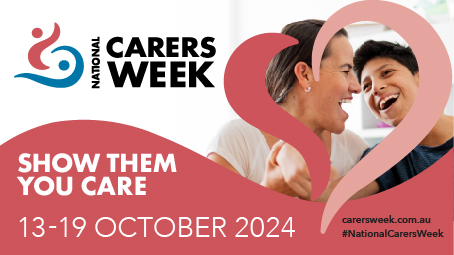
HURRY UP AND WAIT
By REBEKAH DEVLIN
Closed books, telehealth appointments, staff turnover – our therapy world is in crisis. And at the centre of it are our kids, who are missing out on the help they so desperately need.
“Sorry, we’re not taking on any new clients at the moment. We can put you on our waitlist, if you’d like.”
It’s the same story every phone call you make – to the physio, the OT, the speechie or the psych. There are just no therapists with availability.
And if a new clinic does open, word spreads through local FB groups like wildfire and it’s like a bunch of seagulls on a chip fighting for appointments!
And don’t even bother if you’re in regional or rural Australia – telehealth with a therapist, often in a different state, is seemingly the best you can hope for right now.
At present, across all disciplines, wait times can blow out beyond 12 months for an initial appointment.
According to our Source Survey, 35 per cent of you are currently on a waitlist for a therapist and a further 13 per cent said you’ve been unable to access the required therapy.
WHAT’S CAUSING THE PROBLEM?
“With an ageing population and introduction of NDIS, demand for allied health services has increased dramatically. There are not currently enough allied health professionals to meet the demand,” says Associate Professor Helen Bourke-Taylor PhD, who is a registered occupational therapist and teaches in the occupational therapy program at Monash University.
“About 75 per cent of all therapists work in metropolitan areas, leaving rural areas with workforce shortages. Occupational therapy and speech pathology are about 90 per cent female-dominated, therefore the workforce is more likely to be influenced by maternity leave and part-time workers.”
Occupational Therapy Australia president, Associate Professor Carol McKinstry, says in recent years, occupational therapy has been the fastest growing registered health profession in Australia “and demand for occupational therapists is only going to boom as the population ages and the need for mental health and chronic disease services increases”.
“We know the national NDIS workforce plan has identified the allied health workforce will need to grow by 40 per cent through to 2024 to meet projected NDIS demand, with occupational therapy workforce one of the largest disciplines delivering NDIS services,” she says.
According to the Australian Physiotherapy Association, the number of registered physios in Australia has grown by 26 per cent over the past five years – from 31,276 in 2017 to 39,387 in 2021.
Paediatrics and disability are specialist areas, so only a tiny portion of physios are actually practising in these key disciplines – the number of registered specialist paediatric physiotherapists has grown from 669 in 2017 to 995 in 2021; disability physiotherapists have grown from 180 to 294 in the same period.
However, one of the biggest hurdles is staff retention. According to the Australian Physiotherapy Association, the average career length of a physio is just seven years, after spending four years studying in the first place.
“We need a solid and strong workforce,” says APA Disability National Group chair, and private practice owner, Julienne Locke. “We need to make it more attractive to work in this sector.”
Indeed private practices are competing with hospitals, the health sector, rehabilitation clinics and aged care to secure, and then retain therapists.
On jobs website Seek, there are currently 2152 job ads Australia-wide for speech pathologists, 7767 for occupational therapists, 8144 for psychologist and 6119 for physiotherapists.
The APA is conducting training programs in disability and paediatrics, to upskill their current
physiotherapist workforce and help alleviate the strain on waitlists, but they also say the weight of NDIS compliance and paperwork is onerous, expensive and unsustainable
for many private practices.
“As any reader will know, the NDIS is a complex system to work within. Many therapists have found the transition to this model challenging. It is an evolving space and there are constant changes in documentation requirements, processes, rules etc,” adds Dr Bourke-Taylor.
President of Speech Pathology Australia, Tim Kittel, agrees, saying the increased cost on private practices to provide NDIS services, together with financial uncertainty from the Covid-19 pandemic, has resulted in some speech pathologists leaving the profession or selling their businesses.
And this situation is unfortunately worse for agency-managed participants who require a provider registered with the NDIS Commission – with the cost of auditing, some providers are choosing to drop their registration, particularly in the areas of behaviour supports and early childhood.
Speech Pathology Australia had about 9000 members in 2019, today there are over
13,000 members. There are currently 32 accredited universities offering either undergraduate or postgraduate speech pathology courses across Australia, with more starting in 2022, including the first one in Tasmania commencing later this year. In January 2022 alone, there were 395 members who notified the Association that they had graduated.
To help understand the needs of the workforce, SPA has undertaken a series of surveys with students, practicing speech pathologists, employers and service user organisations. There were over 3000 responses, with the findings currently being examined. However, early indications did show that the current speech pathology workforce has a majority of younger people working in the field.
It is similar across all disciplines.
“Another factor influencing more experienced therapists is that they are very busy with high caseloads and long waiting lists, which makes it hard for them to have time to support less-experienced therapists or take on students who will eventually become the workforce of the future,” explains Dr Bourke-Taylor.
SO, HOW DO WE FIX IT?
“All therapy disciplines are currently rallying government to support growth to have a sufficient workforce to meet the needs of NDIS participants,” Dr Bourke-Taylor says.
“Strategies such as increasing the number of graduates in the allied health disciplines like occupational therapy, physiotherapy and speech pathology and professional development programs to attract already qualified therapists to consider moving to work with children, are already in place.
“Other workforce development strategies such as lowering the cost of training to students to be on par with nurses, or adding therapy professionals to the Priority Migration Skilled Occupations list, are not yet supported by government.”







